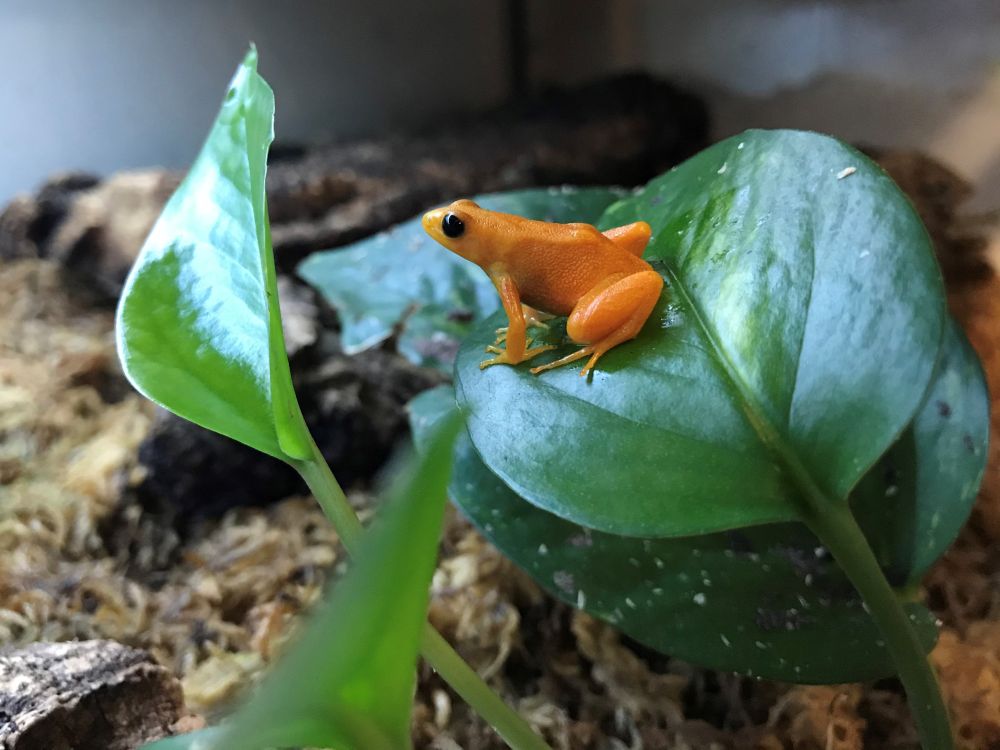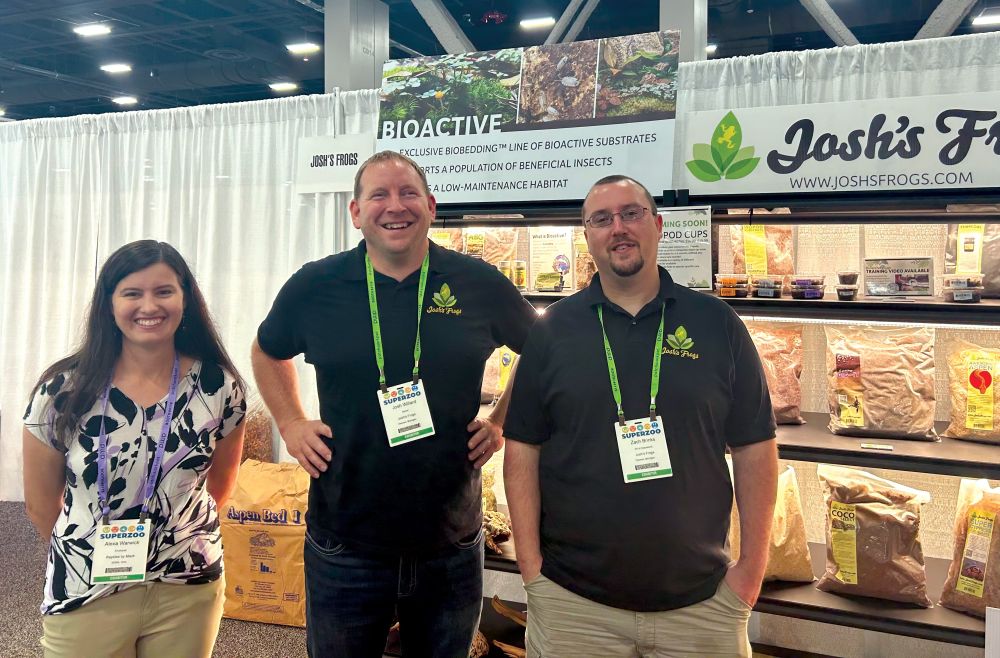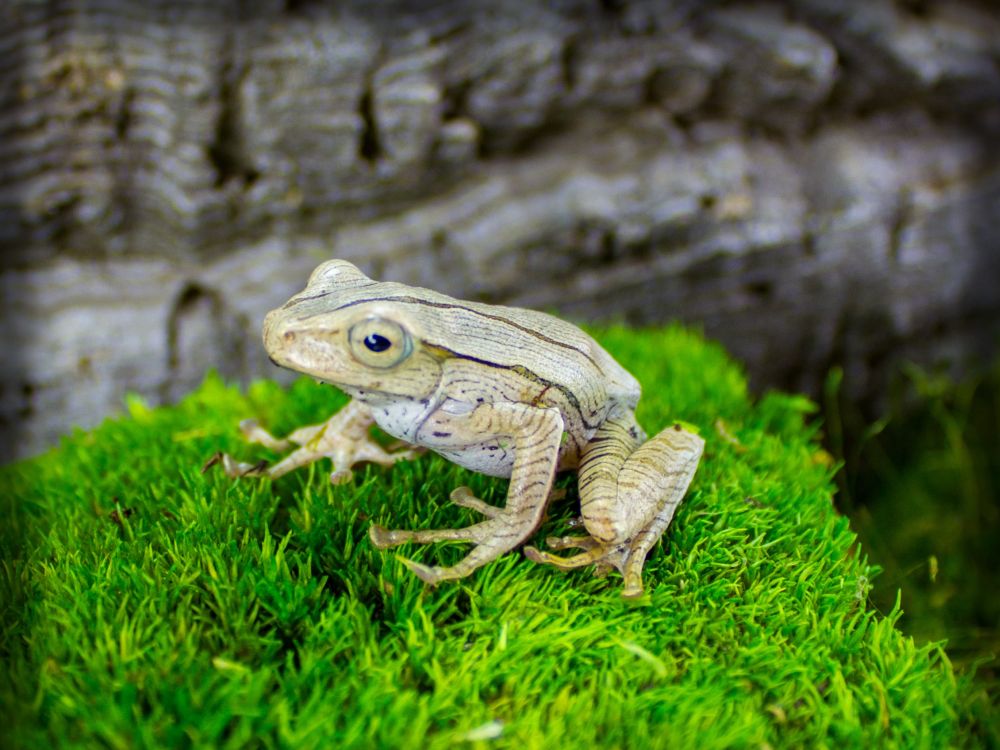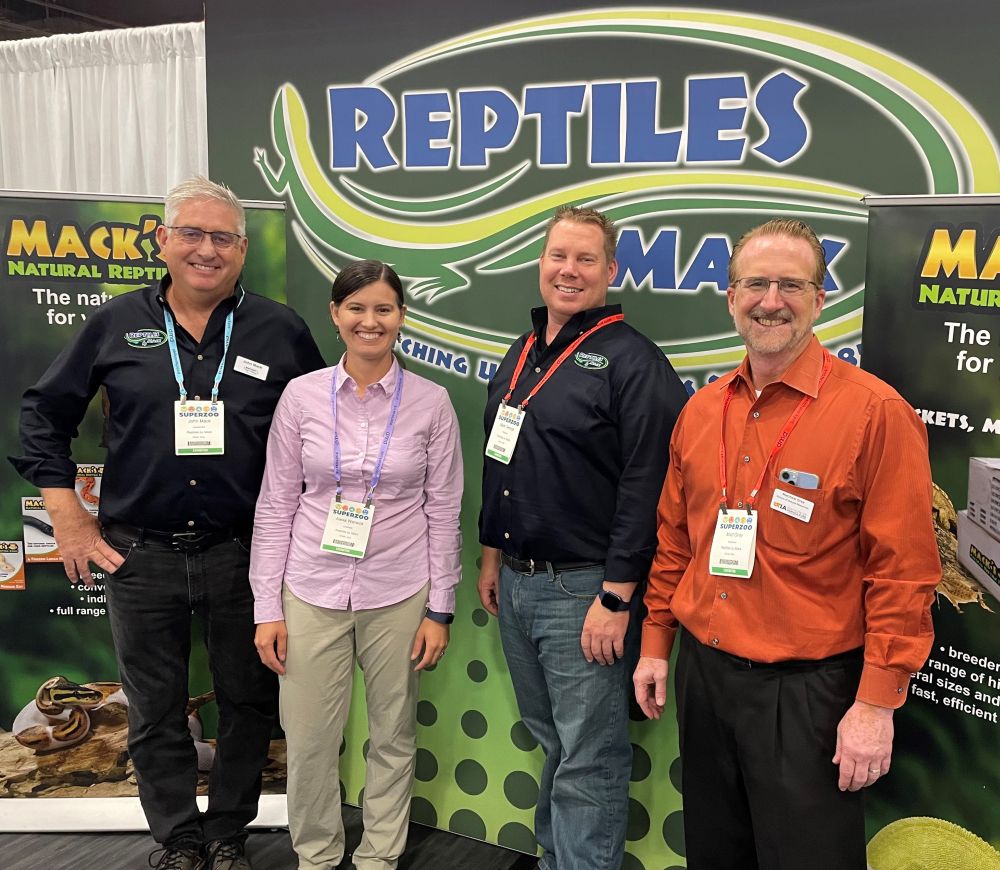Researchers, Pet Industry Collaborate to Keep Amphibians Free of Disease
- Alexa Warwick, Ph.D.
- Assistant Professor, Department of Fisheries and Wildlife
- College of Agriculture and Natural Resources
Project Overview
- This study examines the socioeconomic factors that contribute to the spread of disease in the U.S. amphibian pet population.
- Researchers are collaborating with the pet industry and other stakeholders to identify strategies to mitigate the risk of spillover of pathogens from the pet trade to wild populations.
Products/Outcomes
- The Healthy Trade Institute is a nonprofit formed to empower businesses to champion healthy grade practices that enhance the well-being of pets and wildlife. The institute will provide a healthy trade certification to businesses that have testing procedures and other disease prevention protocols in place.
- The goal of the project is to identify best practices and strategies that can guide policy decisions in wildlife trade.
Partners
- Josh’s Frogs, Owosso, Michigan
- Pet Advocacy Network, Washington, D.C.
- Reptiles by Mack, Xenia, Ohio
- Molly Bletz, Ph.D., Pennsylvania State University
- Jesse Brunner, Ph.D. and Jonah Piovia-Scott, Ph.D., Washington State University
- Matthew Gray, Ph.D., Nina Fefferman, Ph.D., and Neelam Poudyal, Ph.D., University of Tennessee
- Julie Lockwood, Ph.D., Rutgers University
Form(s) of Engagement
- Community-Engaged Research

Golden mantella frog perched on a pathos leaf
On a windy spring night at the Bengel Wildlife Center in Bath, Michigan, Alexa Warwick led 45 people on a “frog walk.” They were rewarded with a chorus of high-pitched frog calls, each representing a different species. “It can be really incredible to go out at night and listen to them,” Warwick said.
Warwick relishes sharing her love of wildlife and the outdoors with others.
As an MSU conservation biologist, she has focused her research on the ecology and evolution of amphibians such as frogs and salamanders. As a community-engaged researcher, she is equally interested in the role humans have in protecting the rich biodiversity of the natural world.
These passions have intertwined through Warwick’s participation in a study examining the socioeconomic factors that contribute to the spread of disease in the U.S. amphibian pet population. Warwick and a multi-institution team of researchers are collaborating with the pet industry and other stakeholders to identify strategies to mitigate the risk of spillover of pathogens to wild populations.
The research team includes MSU, University of Tennessee, Washington State University, Penn State University, and Rutgers University.
The five-year project, “Socioeconomic and Epidemiological Drivers of Pathogen Dynamics in Wildlife Trade Networks,” was funded in 2022 through a $2.75 million grant from the Ecology and Evolution of Infectious Diseases Program, a joint program of the National Science Foundation, National Institutes of Health, and the U.S. Department of Agriculture.
Wildlife Trade, Dangerous Pathogens, and Preserving the Ecosystem

At SuperZoo, Alexa Warwick is pictured with Josh Willard and Zach Brinks of Josh’s Frogs.
The wildlife trade involves an estimated 2.5 million live animals valued at more than $300 million moving among 180 nations per year. “This represents a key pathway for the evolution, emergence, and spread of novel pathogens,” according to the grant proposal.
The implications go beyond pets and wildlife. “Pathogens such as COVID-19 and chytrid fungi have cost global economies trillions of dollars, led to substantial human life and biodiversity loss, and been linked to the wildlife trade,” according to the grant.
“Bsal (Batrachochytrium salamandrivorans) is the chytrid fungus that we are concerned about coming to the U.S.,” said Warwick, an assistant professor in the Department of Fisheries and Wildlife. “We have almost 45%—almost half the world’s salamander diversity—in the United States.”
While the fungus has not yet been detected here, it has caused significant salamander die-offs in Europe. “If this fungus comes in, it can really wipe out [salamander] species pretty rapidly if it gets into the ecosystem,” Warwick said.
Another chytrid fungus concerning researchers and their industry partners is Bd (Batrachochytrium dendrobatidis), a skin disease affecting frogs that is already in the United States. Frogs can also carry Bsal, but they do not get sick from it.
The study’s implications go well beyond frogs and salamanders. “If we’re thinking about this from a biodiversity standpoint, we certainly want to retain as many native species as possible,” Warwick said. “And from a human standpoint, understanding how pathogens get moved across the world certainly has clear impacts on our own health.”
Partnering with the Pet Industry

Borneo eared frog
Warwick and her team have collaborated with representatives of the pet industry from the start. Partners include Josh’s Frogs in Owosso, Michigan; Reptiles by Mack in Xenia, Ohio; and the Pet Advocacy Network, which represents pet businesses and owners.
“That’s been the biggest piece,” said Warwick, who said the insights of those in the pet trade have been essential to the project. “I don’t have that experience of being in the industry. We can do research about something, but doing research with a group leads to better, more impactful results, and that’s engagement.”
One key partner has been Josh’s Frogs in Owosso, which has lent its expertise, opened the doors to its 100,000-square-foot warehouse, and connected researchers to pet owners and hobbyists. The company welcomed the opportunity to participate.
“Studies such as these can help lay the groundwork for a safer, more sustainable pet industry,” said Zach Brinks, vice president of live operations at Josh’s Frogs. “We need to do what we do in a way that does not put wild populations at risk and protects our animals.”
Founded by Josh Willard in 2004, the business now employs 80 people, including many Spartans with life science degrees. The retailer houses between 30,000 and 50,000 frogs at any one time. Brinks, who has a bachelor’s degree in biology from MSU, joined Josh’s Frogs in 2007.
The company was eager to partner with the researchers to share best practices for keeping the pet trade free of disease. “We wanted to provide any information, help, and access to animals that we could,” said Brinks, noting they have given feedback on surveys sent to pet owners, testing protocols, and more.
That expertise has been invaluable to the project, said Warwick, who also has found it fulfilling to get to know members of the industry and see how much they have in common, starting with a shared “love of critters.”
Warwick also has facilitated discussions with government agencies, which can be a sensitive subject in the industry. In 2016, the U.S. Fish and Wildlife Service banned the import of 201 salamander species to prevent the spread of Bsal—without consulting those affected.
“They felt like they didn’t have a say in that process,” Warwick said. “It just came down from above.”
Brinks sees the pet trade project and the biosecurity measures already in place at Josh’s Frogs as a way to get ahead of the issue before the government steps in. “My hope is there’s already enough of a process and the research backing that it’s something that the government can get behind and adopt,” he said.
The Pet Advocacy Network, an organization that represents pet owners and the industry, also has lent its support to the study. “This research can provide a data-driven understanding of how pathogens spread in captive populations, offering valuable insights for prevention strategies,” said Ashley Brinkman, director of government affairs.
The findings can benefit both the pet industry and pet owners by amplifying best practices for caring for animals, “ultimately leading to healthier pets and ecosystems. The research also has the potential to influence public policy in a way that supports sustainable and responsible pet trade practices, ensuring that pet owners can continue to enjoy diverse and healthy species.”
Healthy Trade Institute

Researchers connected with pet owners and industry representatives at SuperZoo, North America’s largest pet trade show. From left: John Mack, Reptiles by Mack; Alexa Warwick; Matt George, Reptiles by Mack; and Matthew Gray, University of Texas.
One concrete outcome of conversations between researchers, industry partners, and the broader community of pet owners and hobbyists has been the creation of a nonprofit called the Healthy Trade Institute.
The institute will provide a healthy trade certification for businesses that have testing procedures and other disease prevention protocols in place. “It’s going to provide best practices for businesses and keepers to follow,” Brinks said.
Research conducted by the team indicates that most pet owners would be willing to pay more for animals with a healthy-trade certification, Warwick said. For businesses, the certification adds value—and is the right thing to do, Brinks said.
“If you’re buying frogs and frogs are getting sick and dying, you’re not going to buy more frogs,” he said. “Plus, we’re talking about living things here. They’re frogs. They don’t think like we do. But we want them to be healthy and live long lives.”
The certification program “completely came out of conversations and focus groups,” Warwick said, noting the idea has been embraced not only by industry but by pet owners and hobbyists as well.
Next Steps
Researchers are gathering data on various aspects of the U.S. amphibian trade. This work includes testing for pathogens to determine their prevalence; surveying businesses about incidence of disease and their current biosecurity practices; evaluating the susceptibility of specific species; and gathering data on ideal conditions for safe breeding and shipping.
Warwick’s role is to zero in on the values, attitudes, and behaviors of amphibian importers, hobbyists, retailers, and pet owners. “What values do they have around healthy trade? Around taking care of their animal? How much are you willing to pay to have a healthy animal?”
Initial survey results show that both businesses and pet owners are willing to invest in healthy trade.
Researchers plan to analyze the complex data they have gathered—about pathogen testing, biosecurity measures, socioeconomic factors, and more—into a “game theory model,” Warwick said. The model allows them to measure the impact of each variable on the spread of disease.
“That’s the ultimate outcome,” she said. “To come up with: What are the strategies that would actually mitigate the spread of disease? What should we stop doing that is causing disease?”
Even those who have never owned a pet amphibian have a stake in this research, Warwick said. “We want to see these species persist for future generations to enjoy,” she said. “Even if you don’t care about having an amphibian, having a functioning ecosystem is important for most of us. Clean air, clean water, and just preserving biodiversity across our world.”
- Written by Patricia Mish, University Outreach and Engagement
- Photographs courtesy of Alexa Warwick and Josh’s Frogs